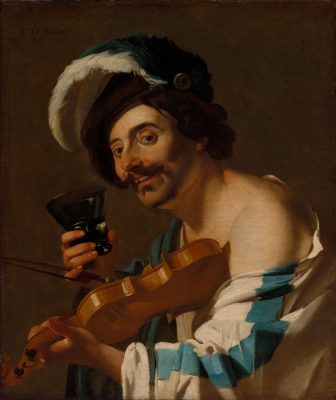The latest RKD Study Going South: Artistic Exchange between the Netherlands and Italy in the 17th century is now online on www.rkdstudies.nl. Ten articles explore various aspects of the artistic and cultural exchange between the Netherlands and Italy in the seventeenth century. This RKD Study is the result of the collaboration between the RKD and the Netherlands University Institute for Art History (NIKI) in Florence and was launched Friday, 31 March, at the annual NIKI-symposium.
Going South
The authors of the study – specialists from Italy, the United States, Japan, Belgium and the Netherlands – elaborate on research they presented at the international conference Going South, held at the end of 2019 at the RKD in The Hague. In particular, the essays focus on the social and cultural context in which seventeenth-century artists from the Netherlands worked in Italy. This publication concludes the project Gerson Digital: Italy, on which the NIKI and the RKD have worked together since 2018.
Artist migrations mapped
In the first article of the study, RKD-curator Rieke van Leeuwen maps seventeenth-century artist migrations to Italy using data from the RKDartists database. From the sixteenth century onward, it became tradition for artists from the Low Countries to travel to Italy, where they could study works of art by Italian contemporaries as well as classical sources. From a seventeenth-century Italian perspective, there was no sharp distinction between artists from the Northern and Southern Netherlands, both of whom were referred to as ‘fiamminghi’ or ‘fiamenghi’, regardless of their origin. However, the RKDartists dataset shows that the majority of Netherlandish Italy-travelers did come from the Southern Netherlands. In fact, there were 1,075 of them, while ‘only’ 641 artists came from the Dutch Republic. Artists from the Northern Netherlands apparently preferred traveling to Germany. This analysis of artist migrations in the seventeenth century paves the way for new art historical research into travel patterns and artistic influences.
The Master of the Roman Songbook
Going South also sheds new light on ongoing research concerning individual artists. In her article, Anna Bianco presents new discoveries about an anonymous Flemish/Italian illustrator. In this ground-breaking essay, she presents his oeuvre for the first time under the provisional name ‘The Master of the Roman Songbook’. Building on previous art historical research, Bianco manages to attribute 38 drawings to this master. Previously these works were linked to different artists, but from her research it became clear that these drawings must be by one and the same artist. Of these drawings, 28 were made as illustrations to secular cantatas in a manuscript in the Biblioteca Casanatense in Rome – they are the reason for the illustrator’s poetic provisional name.

